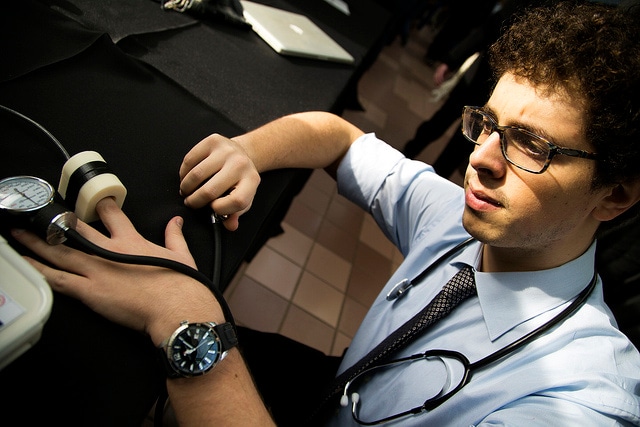Design Program and Design Spaces
Design Spaces Encourage Collaboration
The BME Design Spaces are housed in the Lurie Biomedical Engineering Building on North Campus at the University of Michigan, Ann Arbor. The goals of these spaces are to:
- foster community and teamwork in biomedical engineering
- promote experiential learning through prototyping, fabrication, and testing
- increase interprofessional interactions among engineering, industry, and medicine

Design Projects – Engineering 100
All BME freshmen attend the same section of ENG 100, which is organized as a company, Blue Genes R&D.
- Clients are physicians from U-M Health System or School of Dentistry
- Lectures cover principles of transcription and translation plus emerging diagnostic technologies for genetic disease
- Deliverables: Paper design, oral presentations, final report, meeting minutes, journals
Introduction to Biomedical Engineering Design
- Students use Matlab, SolidWorks, and COMSOL on a three-part design project
- Prepares students for 450 & 499
Biomedical Instrumentation and Design
- Covers circuits, biopotentials, ECG and EMG design, data acquisition, signal analysis, bio-electrode and bio-sensors, pulse oximetry
- Circuit-related design project may be assigned (system for measuring fitness-related signals during exertion) or chosen by class, depending on instructor
- Deliverables include design documents, prototypes, in-class demonstrations, and reports.
Senior Capstone Design – BME 450 (semester), 451/452 (full year)
- Course organized as biomedical instrumentation company
- Students work in teams of 5-7 on projects sponsored by local industry, UMHS physicians, College of Engineering research labs
- Covers entire design process: problem definition; design specifications; documentation; design review; prototype fabrication, testing, and calibration
Graduate Design Program

Advanced Medical Product Engineering and Development (AMPED) Program (MEng)
AMPED is a professional Master’s degree (MEng) for engineers who want to make an impact in the medical technology industry. The design and development of medical devices and systems is a complex and highly structured process. Engineers play key roles at all stages of medical product development, including needs finding, concept generation, mechanical design, prototyping, testing, fabrication, and commercialization. The goal of the AMPED program is to provide students with the practical knowledge and skills needed to bring new and improved medical devices to the clinic in the context of the current healthcare environment. Key features of the program include:
- A design-build-test practicum, in which student teams form around clinical problems and work together to create new product concepts
- Core content in quality systems, risk management, and regulatory structures, which are foundational to medical product development
- Preparation in advanced concepts of current importance in the medical technology industry, including telehealth, cybersecurity, AI/ML in healthcare, value-based care, inclusive design, and sustainable product development
- Professional development and leadership training to enhance self-awareness and cross-functional teamwork